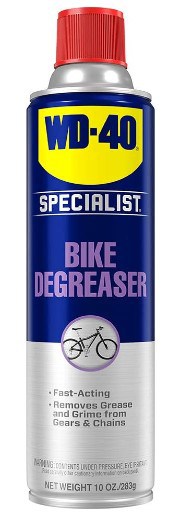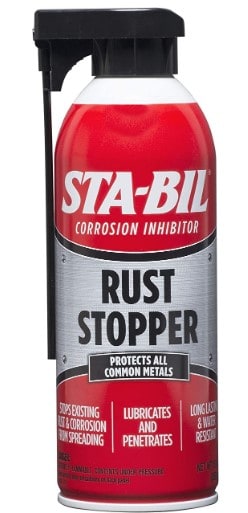Bearings are an essential component of the headset, given that they reduce friction between the steerer and the bearing cups. For that reason, you should get the most out of them. But how long should headset bearings last?
If you ride in good dry conditions, headset bearings can last 2-7 years, depending on the level of service. But if you ride in wet or dusty conditions, they can only last you 2-3 months.
So, two factors are critical in determining the headset bearings’ lifespan: cycling conditions and headset maintenance.
We’ll talk more about the two. We’ll also look at how often you should service your bearings and the signs to show you that you should replace them.

How Long Should Headset Bearings Last?
Some people use headset bearings for only a couple of months and others up to 2-7 years. Do you know what the difference between these two groups is?
Well, it is the level of servicing and the cycling condition.
If we can start with the first difference;
The more regularly you service your headset bearings, the longer it’s likely to serve you.
Often, you only need to clean the bike bearings with an effective headset grease like the Park Tool Polylube 1000.
Unto the second issue;
If you want your bicycle bearings to last you longer, you have to ride in dry and low-dust areas. Wetness and dust are enemies to the performance and life of your bike bearings.
The problem with riding in wet conditions is that mud is likely to wet the bearings and attract rust. That reduces the effectiveness and lifespan of the bearings.
So, you would be lucky if the bearings can last you more than three months in such settings. Most of them only last 2 or 3 months before failing.
So, what do we mean by wet conditions?
When thinking of wet conditions, we are not just talking about the rain but the snow too. Since ice is likely to melt inside your headset, the bearings are likely to get wet, thus susceptible to rusting.
Note, however, that you can clean off the rust using an effective bike cleaner like the WD-40 Specialist Bike Degreaser.
Other things that can shorten the lifespan of bicycle headset bearings are dust and sand particles.
Since the two are naturally rough, they are likely to get into the bearings and cause friction between the steerer tube and the bearing cups.
As a result, your bearings are likely to become less effective. Even worse, they are likely to wear out faster than they should.

These reasons are why you should learn to clean your bike bearings often. Using a WD-40 Specialist Bike Degreaser, you can get rid of dust, sand, and other particles.
And when speaking of other particles, they also include excess grease. Though I mentioned headset grease as effective in servicing your bearings, you shouldn’t apply too much of it.
If you do, you’ll attract dust and other small particles that could interfere with your headset bearings’ performance.
In summary, how long do headset bearings last?
From our discussion, we can conclude that:
Bike bearings last for 2-7 years under perfect conditions and only 2-3 months when riding in wet or dusty conditions.
How Often Should You Service Your Headset Bearings?
Here are the things to note:
- Each time you assemble and disassemble the headset
If you decide to take your bike headset apart for whatever reason, you cannot overlook the bearings. So, examine them.
If they are rusty or broken, then you should replace them.
- After three months, if you ride regularly
If you cycle regularly, the chances of the bearings wearing down or breaking are much higher. So, to ensure that you reduce the risk, consider servicing your headset bearings after three months of cycling.
That’s more important if you are a pro cyclist, commuter cyclist, or fitness trainer.
- When cleaning or servicing the headset
It makes sense to clean the bearings when cleaning the headset, as they are an essential part of the headset. You only need to degrease and lubricate them appropriately.
How Often To Replace Headset Bearing?
Key Signs For Changing Your Bike Bearings
In general, these are the signs to watch out for when you want to replace your bike bearings:
- Rust
Rust is likely to form on the bearings after prolonged contact with water and when riding in wet and snowing conditions.
For you to determine if the bike bearings are rusty, you have to pull them out.
Ideally, you should clean off the rust with an anti-rust spray like the STA-BIL Rust Stopper (View on Amazon).
But if the rust is too deep, then you should replace the bearings.

- Unusual Sound
The sound could be anything from squeaking to grinding.
If you hear any unusual sound that doesn’t go away with greasing the headset or bearings, the chances are that the bearings are worn out and need changing.
- Damage
If the bearings have dents or cracks, they won’t work as they are supposed to, and they’ll thus make your headset less efficient.
So, the best take is to replace them.
- Wobbly Headset
If your headset is just shaky even after adjusting it, there is always the probability that the bearings have outlived their age. As a result, it’s best to replace them.
- Vibrating Frame
If the bearings are faulty or just worn out, they will vibrate, and the effect passes to the bike frame.
FAQs
1. When Should I Replace My Headset Bearings?
If you ride your bike in wet or dusty conditions, consider replacing your bike bearings after 2-3 months.
After all, that’s how long bike bearings last under such conditions.
But if you ride in dry and dust-less conditions and service your headset regularly, your headset bearings could last you up to 7 years or more.
2. How Do I Know If My Headset Bearings Are Worn?
The simplest way to diagnose worn-out bearings is to bounce off the bike’s front wheel several times. If you hear a rattling sound, then it means the headset bearings are old.
You can also look for signs of wear on the bearings. That includes direct damage and excessive rust. If you detect any of these issues, consider replacing your bearings.
3. Should I Grease Up Headset Bearings?
If the headset bearings are sealed, it doesn’t make sense to try to grease them. After all, they are protected against bad weather.
If you stubbornly grease sealed bearings, you’ll only add an unnecessary greasy layer that will attract dirt and dust.
But if the bike bearings are not sealed, you can add a thin layer of bike grease.
4. How Long Do MTB Headset Bearings Last?
Given that MTBs are used in dusty and unfriendly terrains, the headset is susceptible to mud and dust. All these issues can wear down your headset bearings.
As a result, your bearings are only likely to last 2-3 months. Nevertheless, if you don’t often ride on trails, then the bike bearings could last you longer.
5. Can You Service Sealed Bearings?
Sealed bearings are generally designed to be easily disposed of as they are. That, however, doesn’t mean that you cannot service them.
You only need to do it carefully to ensure that you get out the seal without breaking it or bending it.
Once you do, you can grease the bearings perfectly with a grease gun like the GreaseTek Premium Pistol Grip Grease Gun.
6. Should I Grease Up Headset Cups?
Headset cups are not hard to grease. Note, however, that you shouldn’t put too much grease on them. It will attract unnecessary dirt and dust, which interferes with the performance of your headset.
So, even if it’s okay to grease your headset cups, ensure you only apply a thin layer.
7. How Does A Bad Bearing Sound Like?
A bad bearing sounds like clicking or grinding noise. Some people report it as a rattling or squealing sound.
Regardless of how it sounds, the weird noise is not something good. It shows a severe problem with your bike bearings.
Relevant:
Closing Thought:
So, how long should headset bearings last? As shared, the bearings can last anything between a couple of months to several years, depending on the servicing level and cycling conditions.
So, if you want them to serve you longer, you have to service the headset regularly and avoid wet and dusty roads.